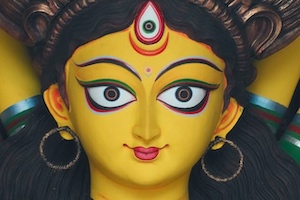Parts of Kolkata still waterlogged; Met predicts more rainfall: Pumps deployed to drain out water; several pockets of Salt Lake, north and central Kolkata continued to be inundated
Indian Express | 25 September 2025Kolkata is slowly returning to normalcy, a day after heavy overnight rainfall caused widespread flooding, claiming the lives of at least 11 people and disrupting daily life.
While streets, railway tracks, and Metro lines were inundated, city authorities have begun efforts to pump out water from low-lying areas. Several pockets of Salt Lake, north and central Kolkata remained waterlogged on Wednesday.
“Water has receded quite a bit despite significant flooding in the Ganga. Apart from a few low-lying areas, most of the water has drained. Nature is not in our hands. Kolkata Port, Farakka Barrage, DVC’s Maithon — all have not dredged the river for the past 20 years. Whenever it rains in Bihar or UP, water flows into Bengal. We have to manage everything ourselves,” Chief Minister Mamata Banerjee said.
Several Puja pandals remained waterlogged, with just a couple of days left for the festivities to begin.
The wet spell, however, is expected to continue for the rest of the week. A new low-pressure area is predicted to form over the Bay of Bengal around September 25 and intensify into a depression by September 26, which could bring more rain to the region.
The IMD has ruled out heavy rainfall until Thursday, instead forecasting mostly cloudy skies with light to moderate showers, accompanied by thunder and gusty winds at some places.
A yellow alert has been issued for a number of districts in South Bengal, including Howrah, Hooghly, North and South 24 Paraganas, Purba and Paschim Medinipur, Jhargram, Purulia, Bankura, Purba and Paschim Bardhaman, Birbhum, Murshidabad, and Nadia, until September 29. Light to moderate rain and thundershowers are very likely in many of these areas, continuing until September 30.
According to the IMD, Tuesday’s downpour of 251.4 mm in 5-6 hours was the city’s third-highest single-day rainfall in the month of September and its sixth-highest ever recorded. The city narrowly avoided a cloudburst, with the highest hourly rainfall reaching 98 mm, just shy of the 100 mm threshold.
